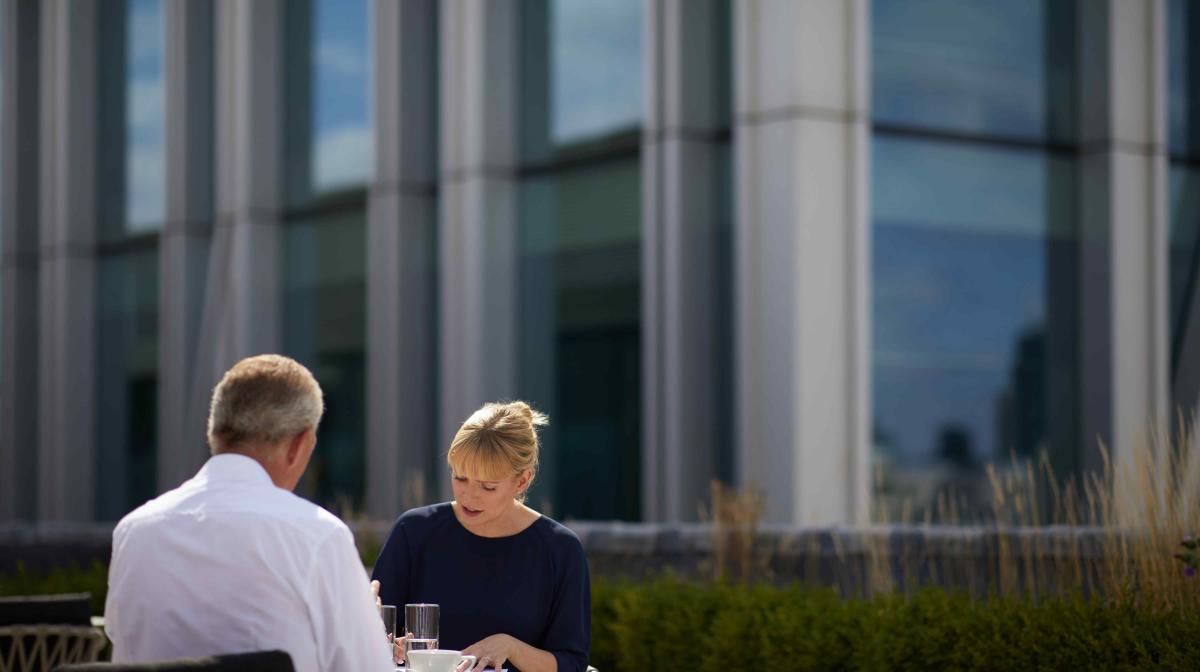Whether it’s improved tech to facilitate Zoom meetings or a flexible lease to support a new hybrid model, 2021’s workplace is different. But despite the media’s lengthy debate over ‘the future of work’, what actually are the key ingredients of a post-pandemic office?
A thought-provoking article in The Sunday Times highlighted one critical change to the world of work: the need for improved in-office ventilation to reduce the spread of Covid-19. However, interestingly, Orla Hegarty, architect and assistant professor at University College Dublin, stressed that we already have the tools required to make change; we just need to implement them proactively.
Indeed, over the summer, our clients returned to their offices in heritage buildings and found that simple, practical measures reduced risk. For example, opening windows to encourage natural ventilation, which isn’t possible in high-rise city offices, and using open spaces like outdoor terraces or collaborative break-out areas proved successful in both reducing risk and making colleagues feel comfortable.
Similarly, many businesses have sought workspaces with bike access and showers post-lockdown, and have been able to make the most of London’s extensive cycle lanes and ‘Boris Bike’ network. In fact, more than 100km of new or upgraded cycle routes have been initiated since the start of the pandemic – part of Sadiq Khan’s mission to ensure the capital caters to demands for a greener commute post-pandemic. Now, one in five Londoners live near cycle lanes.
Ultimately, what reading Hegarty’s insights underscores is that priorities in the post-pandemic office hunt have shifted but that solutions are entirely attainable, and often already within our reach.




